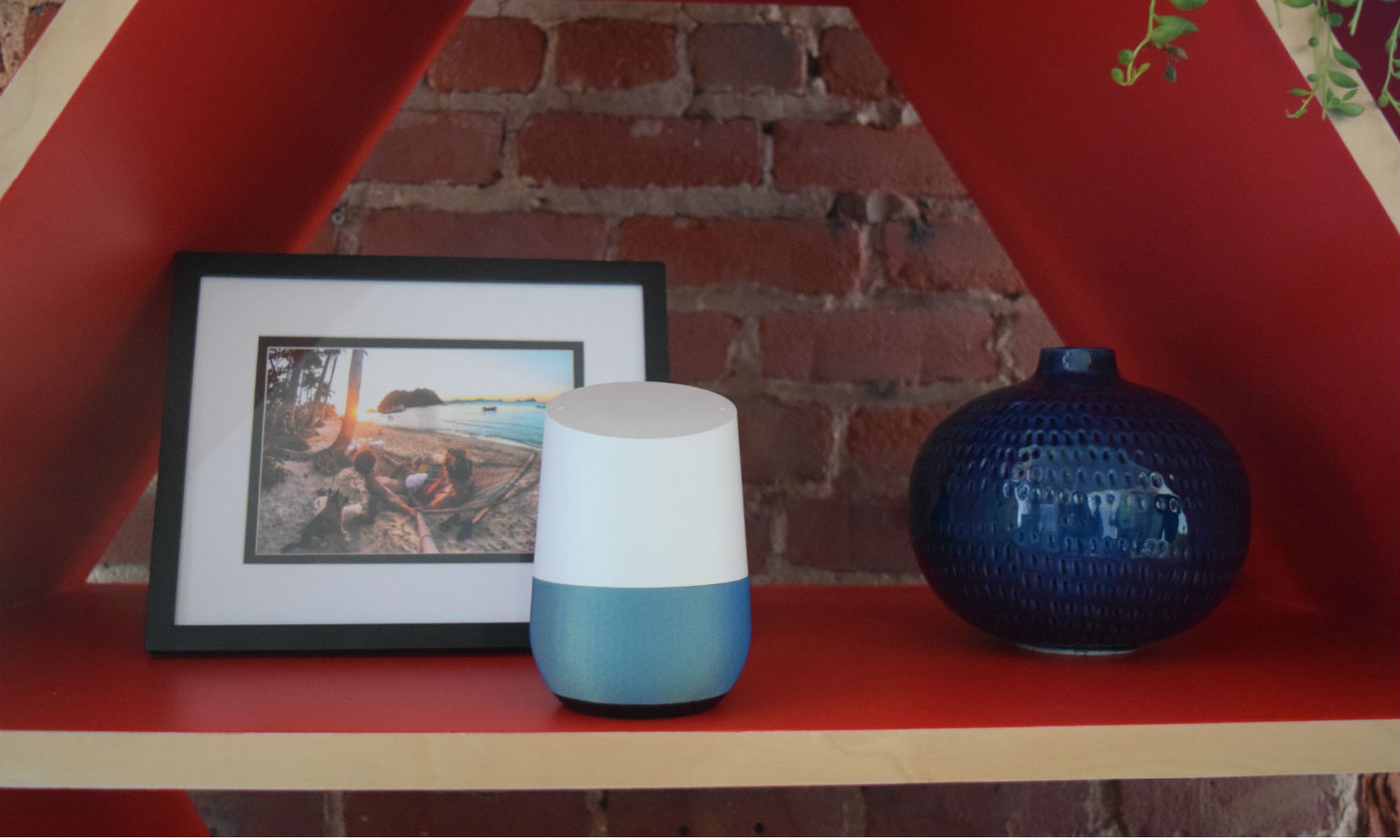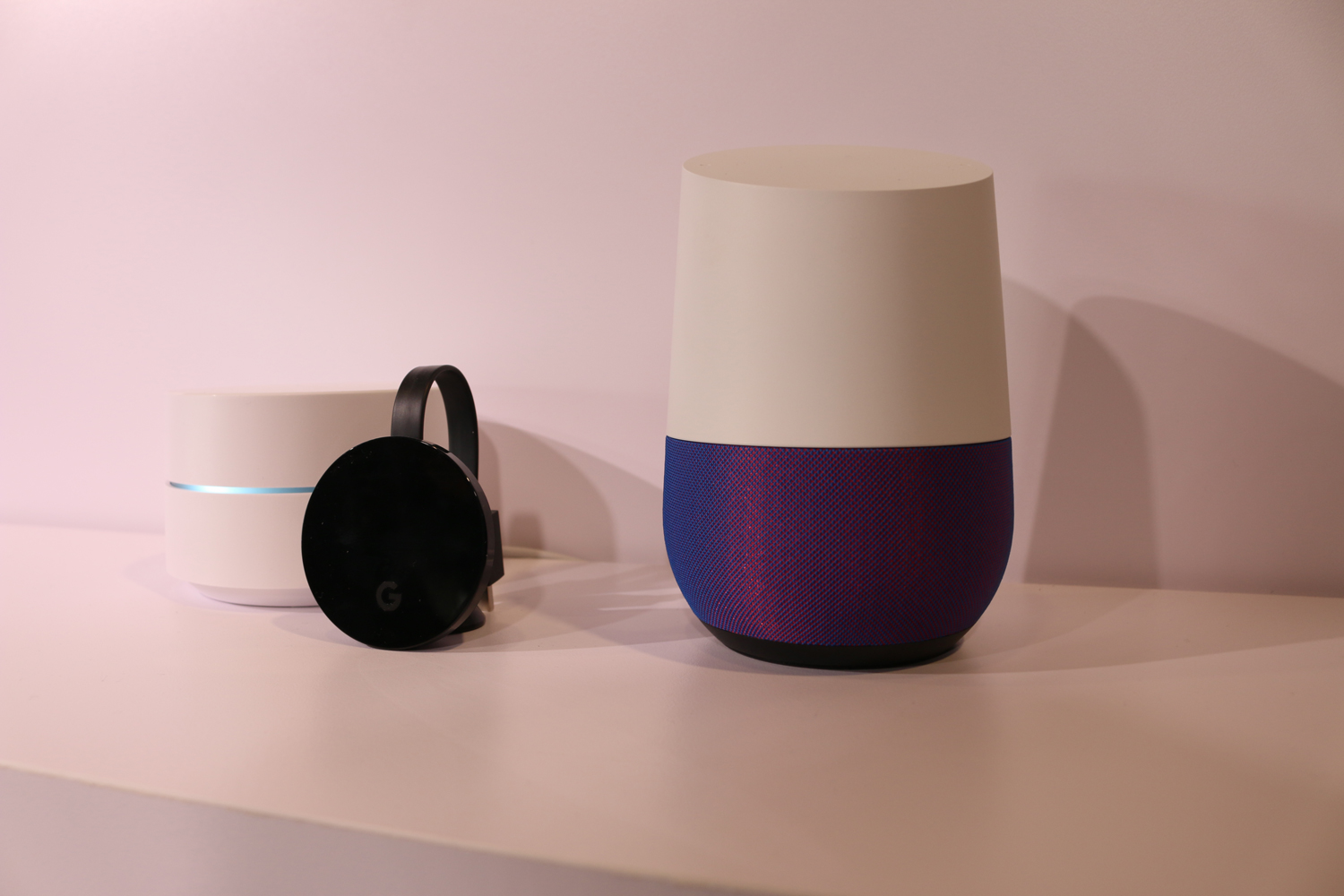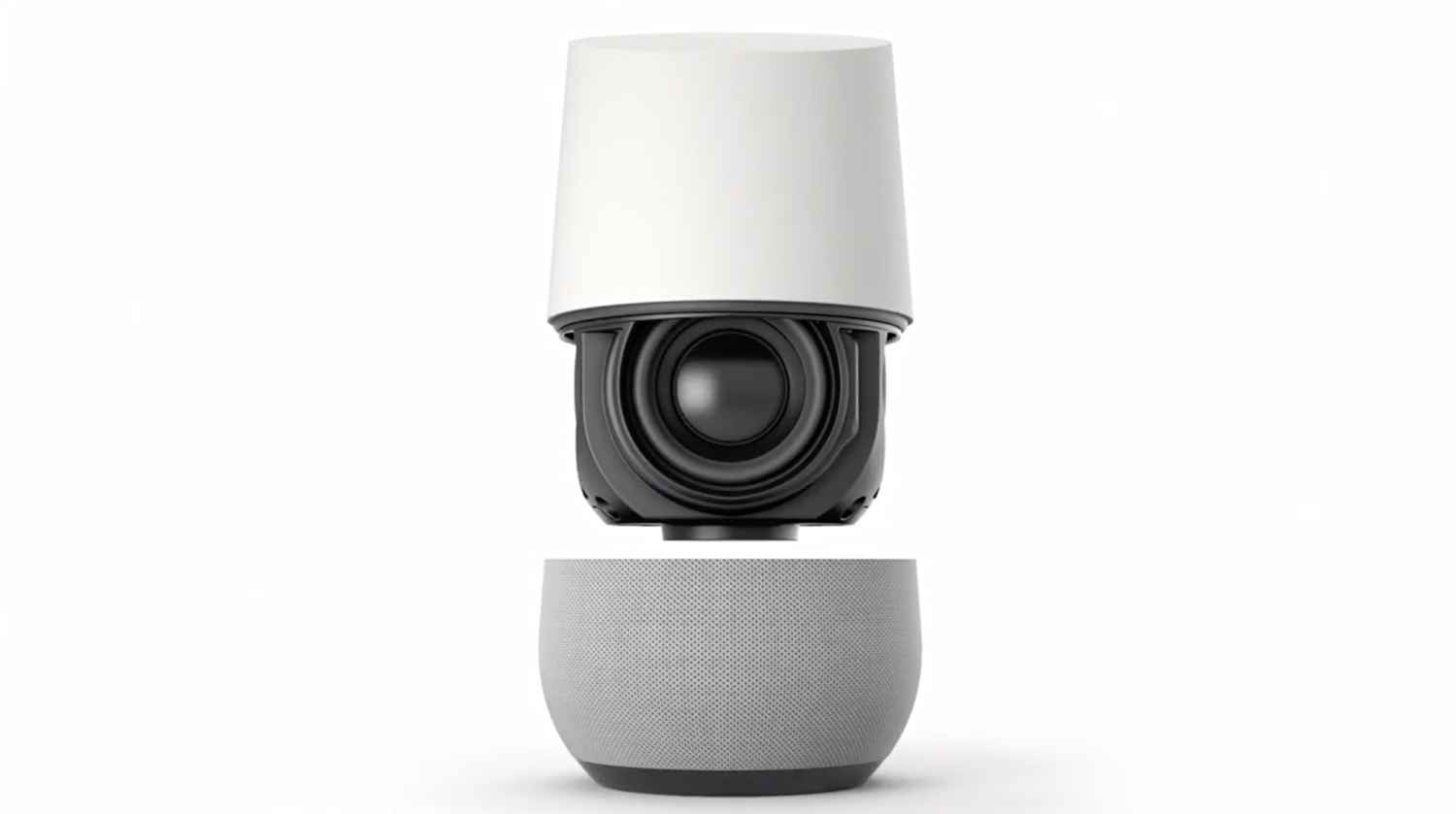Google Home Hands-On: How It Will Challenge Amazon Echo
Google hopes that its AI-powered assistant, integration with hardware like the Chromecast and compact design will help the new Google Home speaker take on Amazon's established Echo device.
SAN FRANCISCO — Google Home, the new voice-powered speaker, can play the music you tell it to, greet you each morning with a weather report and a reminder of your appointments, and even control playback on that old Chromecast streaming stick you have plugged into your TV. What it has a harder time doing, though, is explaining just how it can top Amazon's Echo speaker and its Alexa voice assistant.
MORE: Is Google Home an Amazon Echo Killer or Copycat?
Fortunately, Google executives are a little bit more articulate on that question. And they contend that Google Home's use of the AI-powered Google Assistant, its integration with other Google hardware like the Chromecast and new Pixel phones and its sleek design make it a compelling addition to the home assistant market even with the Echo's considerable head start.
We'll find out soon enough. The $129 Google Home ships November 4. Though Google first unveiled plans for the speaker at its developers conference in May, today's Google hardware event was our first chance to really see Google Home up close. My demo with the Google Home underscored many of its similarities with Amazon's Echo. But I also saw a few ways Google Home can really stand out.
On the surface, the basic features of Google Home look very similar to what you can do with Amazon Echo. You can control music playback with your voice: Google Home works with YouTube Music, Spotify, Pandora, TuneIn, Google Play Music and — soon enough — iHeart Radio; you can also stream music and podcasts from your Android and iOS devices. With Google Home, you'll be able to control connected devices like a Nest Thermostat, Philips Hue lighting and assorted SmartThings devices, with Google promising more partners down the road. None of these features are going to exactly make Echo owners green with envy, as they tap into the thousands of skills available to Amazon's voice-powered Echo assistant.
Google Assistant's Starring Role
But Google Home has a built-in edge when it's time to ask the speaker a question, vice president of product management Rishi Chandra told me: "We have Google Assistant." Indeed, Google's conversational AI assistant can pull down information from both Google's knowledge graph to provide you with all sorts of answers and data.

Take the speaker's My Day feature. Tell Google Home "Good morning," and it will launch in with today's weather and information about your commute. It will also tell you about upcoming appointments you've got scheduled for the day and list any reminders you've set for yourself. Google Assistant is pulling all this information from your Gmail, calendar and other Google Maps. And it's got other information — like alternative routes for your commute and the score for last night's Monday Night Football game — at its disposal, too.
When Google Assistant doesn't immediately have that information at its virtual fingertips, it can pull down data from other sources, such as Wikipedia, and it will tell you exactly where it's getting the information from. Google Home can rattle off those answers a little bit too quickly and robotically for my taste at times: it could tell me what wine paired with short ribs based on information from a wine website, but it recited the data so quickly, I have a hard time following along. Still, it's impressive the amount of information the Google Assistant can provide through Google Home and the context in which it can print that information.
It's also worth noting that the same Google Assistant powering your home speaker is the one that lives on Google's new Pixel phone. Tell the Google Home to add an item to your shopping list, and that amended list will be waiting on your Pixel when you arrive at the store.
Google's Place in the Home
Just as handy is Google Home's integration with Chromecast. Using just the sound of your voice, you can activate the streaming stick plugged into your TV to stream videos, photos and music. That works not just with new Chromecasts like the 4K-friendly Chromecast Ultra Google also announced today, but also older models of Google's streaming device such as the Chromecast 2 and Chromecast Audio.

Chandra also thinks the Google Home's design helps set it apart from rival products. Just 3.79 inches in diameter and 5.62 inches high, the Home tucks neatly into most spaces, and Google opted for a white design to help it blend in for those times when it doesn't need to be front and center. You can also swap out different base colors — Google offers mango, marine and violet in fabric, and carbon, copper and snow in metal — to help its speaker match your decor.
"Really, the design of the product feels natural in the home," Chandra said.
The interface is fairly natural, too. While you largely control Google Home with the sound of your voice — and its far-field microphones were able to pick up voices even in a crowded demo area — the speaker also features touch controls. Clockwise and counter-clockwise gestures can raise and lower the volume of music and video playback, and you can touch the top of the speaker to pause things. A array of lights, lit up in the colors of Google's logo, indicate when the Google Assistant is at work.

While Google's striving to make your conversations with the speaker as natural as possible, it may take a little time to learn Google Home's quirks, at least if my demo with the device was anything to go by. Asking Google Home to "show me recipes for short ribs" stumped the speaker, but asking it to "play recipes for short ribs" prompted Google Home to launch a YouTube video on a nearby TV with a plugged-in Chromecast. (These videos can be a little random, as our video launched into a clip from Cooking for Bimbo's, much to the chagrin of the Google employee demoing the feature for me.) And when you ask Google Home to control something like lights, it seems you have be very specific about which lights you want to turn on and off.
Chandra concedes that it's going to take time for the Google Assistant to pick up on the phrases people use in home settings but is confident that the AI can learn quickly. "Interactions in the home, those are new grammars for us," he said. The plan is for that functionality to improve as more people use the assistant to manage tasks in the home.
The Outlook
Amazon's Echo has a considerable lead over Google Home, especially with Google's speaker not arriving until November. But if Google's Assistant can get better with repeated use, it could help Google Home close the gap with other voice-powered speakers very quickly.
Sign up to get the BEST of Tom's Guide direct to your inbox.
Get instant access to breaking news, the hottest reviews, great deals and helpful tips.
Philip Michaels is a Managing Editor at Tom's Guide. He's been covering personal technology since 1999 and was in the building when Steve Jobs showed off the iPhone for the first time. He's been evaluating smartphones since that first iPhone debuted in 2007, and he's been following phone carriers and smartphone plans since 2015. He has strong opinions about Apple, the Oakland Athletics, old movies and proper butchery techniques. Follow him at @PhilipMichaels.

